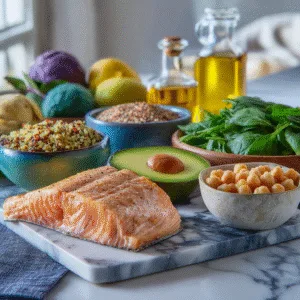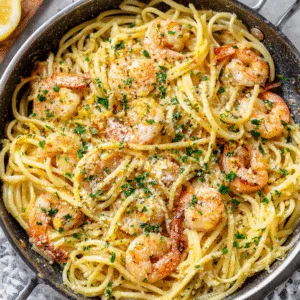If you’re curious about the 21-day smoothie diet, you’re not alone. This popular approach to clean eating promises weight loss, energy boosts, and better digestion—all without complex meal prep or calorie counting. In this guide, we’ll walk you through a full 3-week smoothie meal plan, balanced recipes, grocery tips, and expert-backed insights to help you do it safely and sustainably. Whether you’re looking to reboot your health, slim down, or just simplify your meals, this 21-day smoothie diet plan offers a realistic and delicious place to start. Let’s dive into how it works, starting with a personal story.
Table of Contents
Table of Contents
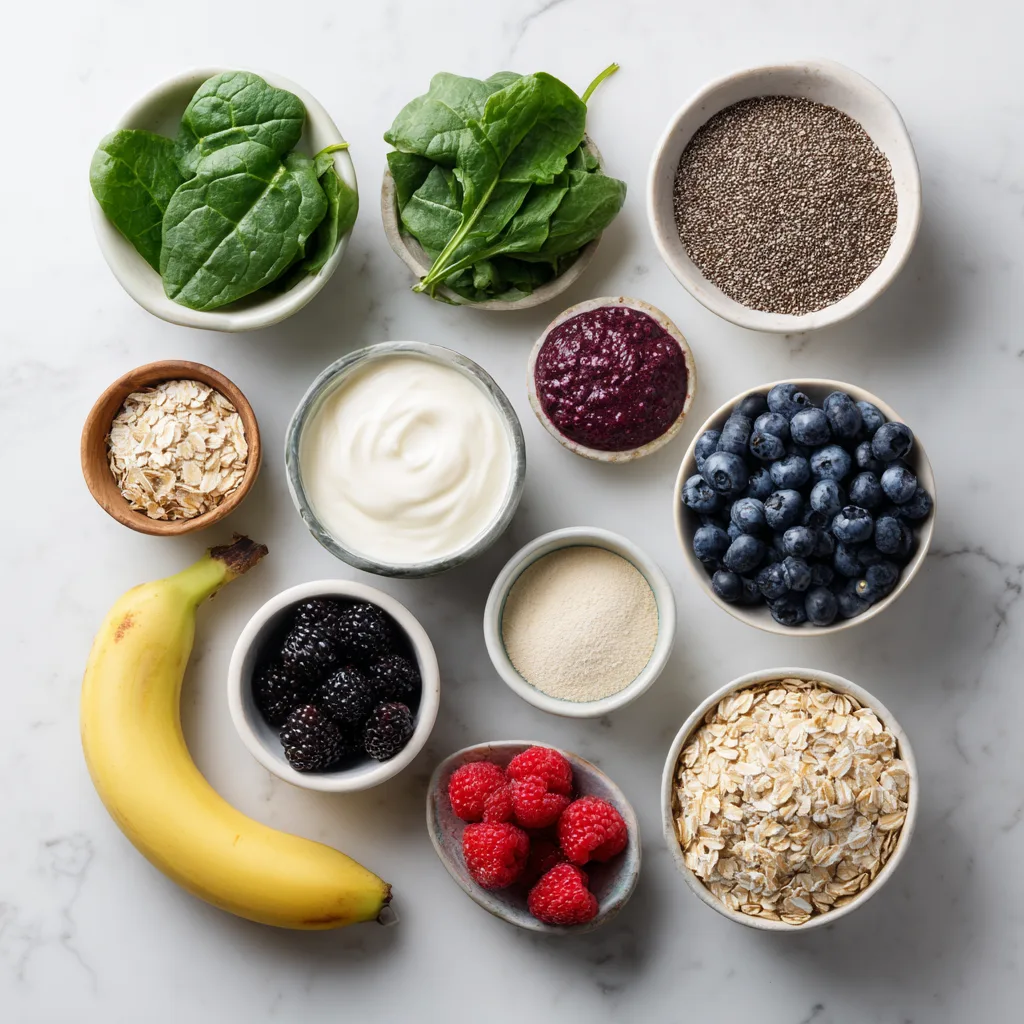
Why I Tried the 21-Day Smoothie Diet
It Started With a Craving for Simplicity
Hi there, I’m Amanda—and the idea of a 21-day smoothie diet didn’t start with a detox trend. It started on a random Tuesday, overwhelmed with life and barely enough energy to cook dinner. I was tired of rushing breakfast, skipping lunch, and stress-snacking before dinner. I wanted something simple, nourishing, and consistent. That’s when I found myself blending spinach, banana, and almond milk—something clicked. I felt better, lighter—not just physically, but mentally. That one smoothie turned into two, and soon I was following a structured 21-day smoothie diet.
But it wasn’t about perfection—it was about finding something that worked with my real life.
What the 21-Day Smoothie Diet Really Is
At its core, the 21-day smoothie diet replaces two meals a day (usually breakfast and lunch) with nutrient-dense smoothies. The third meal is a solid, whole-food dinner. You can also include healthy snacks if needed. The idea is to simplify your eating while flooding your body with fiber, protein, healthy fats, and vitamins.
It’s not a magic detox. It’s a structure—a three-week system to help you reset habits, reduce cravings, and nourish your body without deprivation. Smoothies aren’t just fruity sugar bombs; when built right, they keep you full, energized, and satisfied.
And I learned how to build them right—thanks to tips like the ones in these vegan smoothie options and this refreshing green detox smoothie, which quickly became my go-tos.
In the next section, I’ll show you exactly how the daily routine works and how you can structure your own 21-day smoothie diet without burnout.
Print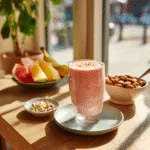
21-Day Smoothie Diet: Ultimate Plan for Fast, Healthy Results
- Total Time: 5 minutes
- Yield: 1 smoothie 1x
Description
This Green Power Smoothie is a staple in the 21-day smoothie diet—packed with fiber, healthy fats, and plant-based nutrients to keep you full and energized.
Ingredients
- 1 cup fresh spinach
- 1/2 banana
- 1/2 avocado
- 1/2 cup plain Greek yogurt or plant-based yogurt
- 1 tbsp chia seeds
- 3/4 cup unsweetened almond milk (or water)
Instructions
- Add all ingredients to a high-speed blender.
- Blend until smooth and creamy.
- Taste and adjust thickness by adding more liquid if needed.
- Serve immediately or refrigerate up to 24 hours.
Notes
For a vegan version, use dairy-free yogurt.
Use frozen banana or spinach for a colder, thicker texture.
You can add 1 scoop of vanilla protein powder for extra protein.
- Prep Time: 5 minutes
- Cook Time: 0 minutes
- Category: Smoothie
- Method: Blended
- Cuisine: American
Nutrition
- Serving Size: 1 glass
- Calories: 310
- Sugar: 7g
- Sodium: 65mg
- Fat: 14g
- Saturated Fat: 3g
- Unsaturated Fat: 10g
- Trans Fat: 0g
- Carbohydrates: 29g
- Fiber: 9g
- Protein: 13g
- Cholesterol: 5mg
Daily Smoothie Diet Routine Made Simple
The Structure: 2 Smoothies + 1 Real Meal + Optional Snacks
The heart of the 21-day smoothie diet is its simplicity. Each day, you’ll replace two of your three main meals—usually breakfast and lunch—with healthy, nutrient-packed smoothies. Then, you’ll enjoy one solid, whole-food dinner that includes lean protein, fiber-rich carbs, and plenty of vegetables. This combination gives your body a break from processed foods and excess sugar, while still providing energy and satisfaction.
Your day might look something like this:
- Breakfast: Green Power Smoothie
- Lunch: Berry Protein Blast
- Snack (optional): Greek yogurt, almonds, or apple slices with nut butter
- Dinner: Grilled salmon, quinoa, and roasted broccoli
Smoothies are quick to make and easy to clean up, which makes them ideal for busy schedules. If you’re working or parenting full-time, this approach keeps things low-effort without sacrificing nutrition. To make prep even easier, many people freeze their ingredients ahead in zip-top bags—like the smart tips shared in this freezer-friendly smoothies guide.
It’s also smart to rotate your smoothies to avoid flavor fatigue and ensure you’re getting a wide range of nutrients. The 21-day smoothie plan below will cover that.
Start Strong With a 3-Day Detox Kickstart
Many people begin the plan with a 3-day “detox” phase using green and low-sugar smoothies to help reduce cravings. This phase isn’t extreme—just a way to give your body a reset. During this time, smoothies include ingredients like spinach, cucumber, lemon, chia seeds, ginger, and unsweetened almond milk.
You’ll avoid dairy, processed sugars, and heavy carbs, focusing instead on hydration, antioxidants, and digestion-friendly blends. If you’re not used to high-fiber foods, start slow—bloating is common during the first few days.
Looking for low-calorie blends to kick off your reset? Check out these Morning Smoothies Recipes that support this phase without leaving you hungry.
Next, I’ll show you how to build the perfect balanced smoothie that actually keeps you full and energized—because not all smoothies are created equal.
How to Build Balanced Smoothies That Keep You Full
The Nutritional Core: Protein, Fiber, and Healthy Fats
Not all smoothies are created equal. If you’re just tossing in fruit and juice, you’re likely spiking your blood sugar and setting yourself up to crash by mid-morning. A well-balanced smoothie, however, includes the right mix of macronutrients to help you feel satisfied and energized for hours.
Here’s the winning formula:
- Protein (15–25g): Essential for preserving muscle, especially during weight loss. Use Greek yogurt, protein powder, nut butters, or silken tofu.
- Fiber (5–10g): Keeps digestion moving and hunger at bay. Add oats, chia seeds, flaxseeds, or leafy greens like spinach or kale.
- Healthy Fats (5–10g): Helps with nutrient absorption and keeps you full. Great choices include avocado, almond butter, and coconut milk.
Use water, unsweetened almond milk, or coconut water as your base. Avoid fruit juice—it adds sugar without fiber. And while fruit is great, keep it to 1 cup or less per smoothie to avoid going overboard on sugar.
This balanced approach is what transforms a smoothie from a snack into a meal. For example, the weight loss smoothie recipe on the blog uses flaxseeds, banana, protein, and avocado to check all the boxes.
Ingredients to Use—and What to Skip
Best ingredients for a smoothie diet:
- Leafy greens: spinach, kale, arugula
- Low-sugar fruits: berries, green apple, kiwi
- Boosters: chia seeds, flaxseed, nut butters, Greek yogurt
- Liquid bases: almond milk, water, coconut water
- Flavor boosters: cinnamon, turmeric, ginger, cacao
Avoid these common traps:
- Fruit-only smoothies with no protein
- Bottled juices or sweetened milks
- Flavored yogurts with added sugar
- High-sugar toppings like granola or honey
Keeping your smoothies clean and focused will help avoid sugar crashes and keep your 21-day smoothie diet effective and enjoyable. If you’re just starting out, browse these beginner smoothie recipes that make getting started easy.
Next, we’ll cover grocery and prep tips to make your 21 days as stress-free as possible.
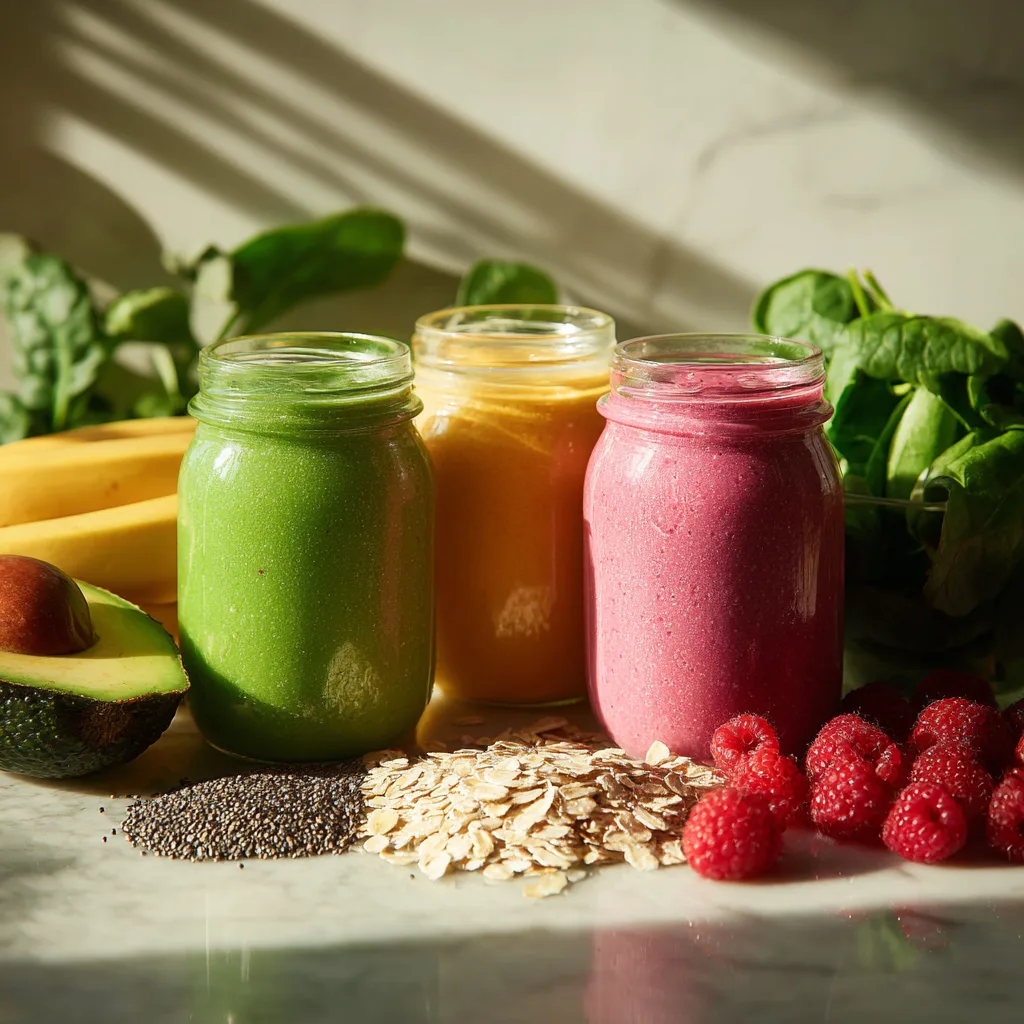
Prep & Planning for Smoothie Diet Success
The Ultimate Grocery List for Your 21-Day Smoothie Diet
Success starts at the store. A well-stocked fridge and freezer mean no excuses when it’s time to blend. Whether you shop weekly or all at once, here are your smoothie staples for each category:
Fruits (buy fresh or frozen):
- Bananas
- Berries (strawberry, blueberry, raspberry)
- Mango
- Pineapple
- Apple
- Avocado
Veggies:
- Spinach
- Kale
- Cucumber
- Carrot
- Beet
- Zucchini (yes, it blends well!)
Protein sources:
- Greek yogurt (plain, unsweetened)
- Protein powder (whey or plant-based)
- Nut butter (almond, peanut)
- Silken tofu (optional but great for texture)
Healthy fats & fiber:
- Chia seeds
- Flaxseeds
- Oats
- Coconut milk
- Almond milk (unsweetened)
Flavor & boosters:
- Cinnamon
- Ginger
- Turmeric
- Cocoa powder
- Lemon or lime juice
- Vanilla extract
Make sure to check out the clean eating meal plan on the site—it has great overlap with this grocery list if you want to combine both routines.
Smart Prep & Freezing Tips to Save Time
Once you’ve stocked up, the next step is batch prep. You can portion out ingredients for several days or weeks into freezer bags or containers. Each “smoothie pack” should include:
- 1 serving fruit
- 1 handful greens
- 1 tbsp seeds or nut butter
- Optional: spices, oats
In the morning, just dump the pack into the blender, add your liquid and protein, and blend!
Here are more pro tips:
- Freeze your greens to avoid spoilage.
- Use silicone freezer molds or ice cube trays for liquid add-ins (like lemon juice, brewed tea).
- Label your bags with flavor profiles or smoothie names (e.g., “Tropical Detox” or “Berry Power”).
You’ll find more inspiration and helpful batch prep strategies in the 21-day meal prep challenge which pairs perfectly with your smoothie diet.
Coming up next, we’ll get into the fun stuff: your 21-day smoothie recipe schedule—with actual recipes for every week.
The 21-Day Smoothie Recipe Plan
Week 1: Foundational Flavors to Start Strong
Your first week is all about getting into the rhythm. These smoothies are designed to keep things simple, nourishing, and flavorful—helping you ease into the routine without getting overwhelmed.
Breakfast Ideas
- Green Power Smoothie: Spinach, banana, avocado, Greek yogurt, almond milk, chia seeds
- Banana Oat Smoothie: Banana, oats, almond butter, cinnamon, almond milk
- Apple Ginger Smoothie: Apple, carrot, fresh ginger, water, lemon juice
- Avocado Coconut Smoothie: Avocado, banana, coconut milk, water
Lunch Ideas
- Berry Protein Blast: Mixed berries, protein powder, flaxseed, almond milk
- Tropical Detox Smoothie: Pineapple, mango, cucumber, spinach, lime juice, coconut water
- Green Tea Energy Smoothie: Brewed green tea, kale, half apple, Greek yogurt
- Beet Berry Smoothie: Cooked beet, mixed berries, banana, almond milk
You can repeat or alternate these based on preference. Be sure to check out this full post of best-ever green smoothie recipes for even more options.
Week 2–3: Rotating for Variety, Flavor, and Results
In Weeks 2 and 3, the goal is to increase variety to avoid boredom and ensure you’re getting a full spectrum of nutrients. Here’s how to mix it up:
Introduce smoothie “theme” days:
- Protein-Packed Mondays: Use more Greek yogurt or tofu
- Tropical Tuesdays: Mango, pineapple, coconut milk
- Wellness Wednesdays: Turmeric, ginger, greens
- Fiber-Full Thursdays: Oats, flax, chia
- Fruity Fridays: Berries, banana, kiwi
- Savory Saturdays: Try adding a pinch of sea salt, cucumber, avocado
- Sweet Sundays: Cocoa powder, peanut butter, banana
You can revisit the low-sugar breakfast ideas article for more smoothie base inspiration with minimal added sugars.
Pro Tips for Smoothie Success:
- Use frozen fruit to chill without watering down.
- Always include protein + fat—it’s what makes this a meal, not a snack.
- Keep your rotation colorful: greens, reds, oranges, purples = full nutrient coverage.
And if you ever feel stuck or want prep shortcuts, check out the detox-focused meals for weight loss to pair your smoothies with solid food options.
Next, we’ll explore solid meal and snack ideas that support your smoothie diet without derailing your progress.
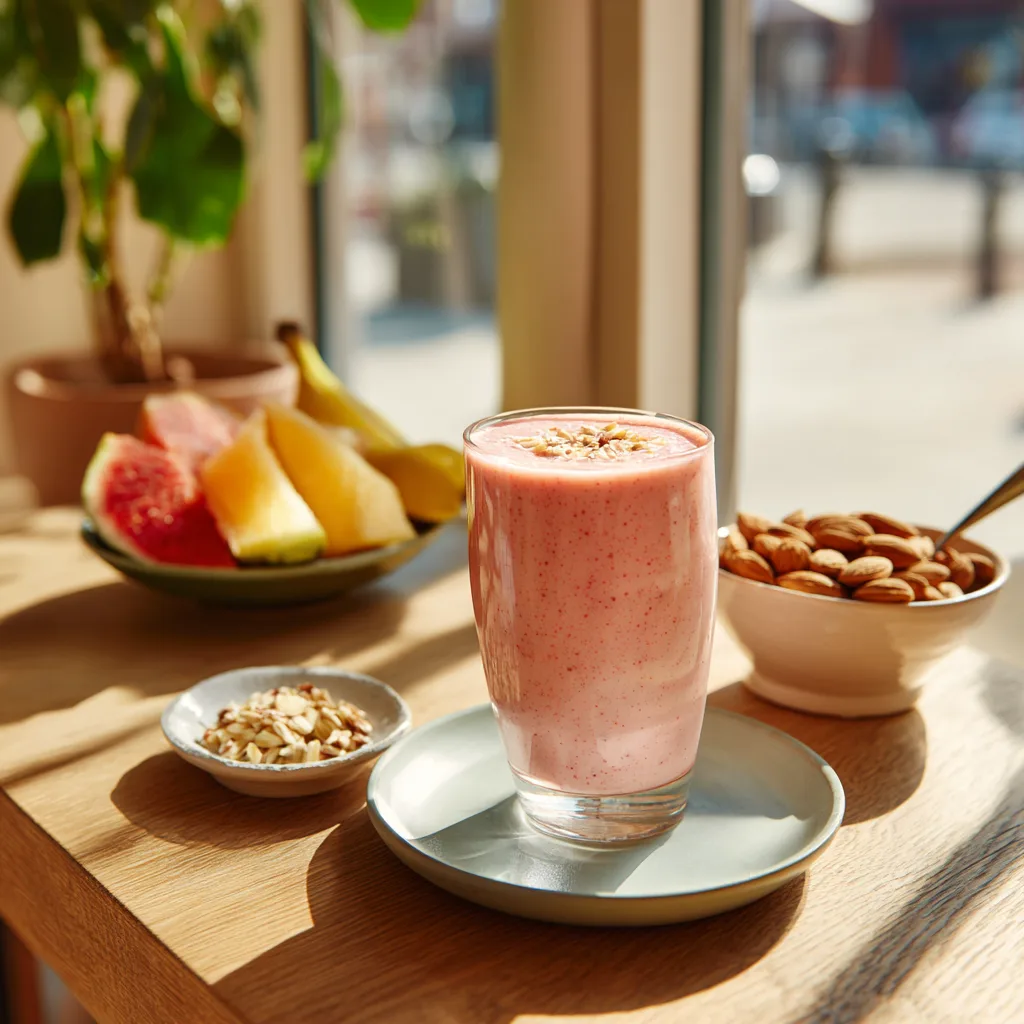
Smart Meals & Snacks to Support the Smoothie Diet
Dinner Ideas That Keep You Full and Balanced
Dinner is your opportunity to nourish your body with textures, flavors, and satisfaction that smoothies just can’t match. The key is to focus on lean protein, fiber-rich carbs, and colorful vegetables while keeping things simple and satisfying.
Here are a few go-to dinner ideas:
- Grilled salmon with roasted sweet potatoes and steamed broccoli
- Baked chicken thighs with quinoa and sautéed greens
- Stir-fried tofu with bell peppers, mushrooms, and brown rice
- Turkey lettuce wraps with shredded carrots, avocado, and tahini drizzle
- Chickpea curry with cauliflower rice and a cucumber salad
Meals like these help balance your macros and prevent the under-eating trap many people fall into on restrictive diets. If you’re looking for additional inspiration, check out this high-protein-focused post on protein sparing recipes—many of them pair perfectly with smoothie days.
Snack Smart: Fuel Without Overdoing It
Yes, you can snack on the 21-day smoothie diet—but it’s about quality over quantity. Focus on nutrient-dense snacks that bridge the gap between meals and keep your energy steady.
Top snack options:
- A handful of almonds or walnuts
- Apple slices with almond butter
- Greek yogurt with chia seeds
- Hard-boiled eggs with sea salt
- Carrot sticks with hummus
- Chia pudding with cinnamon
Avoid the usual snack traps like chips, crackers, or protein bars packed with sugar. And be cautious with fruit—since you’re already getting a lot from smoothies, stick to low-sugar, high-fiber types like green apples or berries.
For even more snack ideas that align with this plan, visit the low-sugar breakfast ideas—many of them double as snack options when portioned right.
Coming up next: how to personalize this plan for dietary needs—vegan, nut-free, and dairy-free lifestyles.
Customizing the Smoothie Diet for Your Lifestyle
Vegan, Nut-Free, and Dairy-Free Substitutions Made Easy
One of the biggest strengths of the smoothie diet is how adaptable it is. With just a few smart swaps, you can make nearly any recipe work for your dietary preferences or food sensitivities.
Going vegan?
Skip dairy-based yogurt and go for:
- Coconut yogurt or almond milk yogurt (unsweetened)
- Plant-based protein powders like pea, rice, or hemp
- Silken tofu for protein and creaminess
Need dairy-free options?
- Use almond milk, oat milk, or coconut milk instead of cow’s milk
- Choose plant-based yogurt alternatives
- Avoid whey protein—go for dairy-free blends
Nut-free?
- Sub sunflower seed butter or tahini for peanut/almond butter
- Use oat or rice milk instead of nut-based milks
- Focus on seeds (chia, flax) for healthy fats
A lot of the vegan smoothie recipes on the blog already follow these principles and are great plug-ins for this 21-day plan.
Keep in mind: don’t just remove an ingredient—replace it with something nutritionally similar. For example, removing almond butter? Add sunflower seed butter or extra flax to maintain fat and calorie balance.
Adapting the Plan to Real Life: Travel, Work & Busy Days
Even with the best intentions, life gets hectic. The beauty of the smoothie diet is that it’s portable. Here’s how to stay on track:
- Prep smoothie packs and freeze them for grab-and-blend convenience
- Use a travel blender bottle to mix on the go (especially with powder-based recipes)
- Make double batches and store in a thermos for afternoon sipping
- Batch-prep snacks like chia pudding or protein bites for workdays
- Follow a 1-smoothie variation if 2 per day isn’t sustainable—breakfast smoothie + 2 whole meals still brings results
And if you’re someone who loves meal planning but needs flexibility, check out the clean eating meal plan—it’s a great add-on or transition tool after your 21 days.
Next, let’s talk about what to watch out for—from health cautions to avoiding the “yo-yo effect” once the 21 days are over.
Cautions, Gaps & Long-Term Maintenance
When the 21-Day Smoothie Diet Might Not Be Safe
Although this diet seems simple and healthy, it’s not ideal for everyone. If you fall into any of these categories, it’s best to consult your doctor or a registered dietitian before starting:
- Pregnant or breastfeeding: You need higher calories and nutrients that may be hard to meet with smoothies alone.
- People with diabetes: Even fruit-based smoothies can spike blood sugar without careful planning.
- Children or teens: They’re still growing and need more variety in textures and nutrients.
- History of eating disorders: Restrictive patterns can be triggering or unhealthy.
- Medical conditions: Thyroid disorders, digestive conditions, or low blood pressure may worsen on a low-calorie plan.
Also, while smoothies can be nutrient-rich, they can hide sugar overload when you rely too much on fruit without protein or fiber. This could lead to blood sugar crashes, fatigue, or even weight gain if not portioned properly.
If you’re unsure, start small: one smoothie a day paired with balanced meals like those in this detox-focused meal plan can offer benefits without going all in.
How to Transition Off the Smoothie Diet Without Gaining Weight
You’ve completed the 21 days—great! Now what?
The mistake most people make is going straight back to processed foods or oversized portions. The goal isn’t to bounce back to old habits, but to gently reintroduce whole meals while keeping smoothies as a tool.
Here’s a smart transition plan:
- Week 1 post-diet: Replace just 1 meal per day with a smoothie
- Week 2: Use smoothies as breakfast only
- Week 3 onward: Rotate smoothie days with full-food days
- Keep snacks and meals clean and consistent
You might also continue using smoothie prep tips from the freezer-friendly smoothie guide to stay in the habit without the full commitment.
The 21-day smoothie diet isn’t a quick fix—it’s a launchpad for cleaner eating, habit-building, and learning how food affects your energy and cravings. Done right, it can truly be the start of something sustainable.
FAQs – 21-day smoothie diet
What is the 21-day smoothie diet?
The 21-day smoothie diet is a short-term eating plan where you replace two of your three daily meals with smoothies—typically breakfast and lunch—for three weeks. The third meal is a balanced solid-food dinner, and optional snacks are allowed. The goal is to promote weight loss, reduce cravings, improve digestion, and “reset” eating habits through nutrient-dense, whole-food smoothies.
Can you lose weight on a smoothie-only diet?
Yes, you can lose weight if your smoothie-only diet creates a calorie deficit while meeting your nutritional needs. However, weight loss isn’t just about calories—it’s also about macronutrient balance, fiber intake, and protein levels. That’s why the 21-day smoothie diet includes one solid meal and snack options, which helps prevent muscle loss and nutrient gaps while still supporting fat loss.
What is the 21-day smoothie diet plan PDF?
Many people search for a downloadable version of the smoothie plan that includes recipes, a grocery list, and a daily schedule. While some PDFs are sold as digital products, you can also build your own based on the recipes and tips shared in this article. For a complete plug-and-play printable version, we’ll be offering a free downloadable soon—stay tuned or check out our clean eating meal plan
Is 2 smoothies a day too much?
Not at all—if they’re balanced. Two smoothies per day works well when you include protein, fiber, healthy fats, and a variety of whole-food ingredients. The danger lies in fruit-only blends that spike blood sugar or under-eating due to low-calorie smoothies. When done correctly, two smoothies a day can be an effective, satisfying strategy for weight loss or clean eating.
Can a smoothie replace a meal?
Absolutely, but only when it’s made right. A meal-replacement smoothie should contain enough calories (around 300–500), a solid dose of protein (15–25g), fiber, and healthy fats. Avoid juice-based or sugar-heavy blends, and aim for a mix of ingredients like Greek yogurt, oats, seeds, leafy greens, and a bit of fruit for flavor and nutrients. The weight loss smoothie

